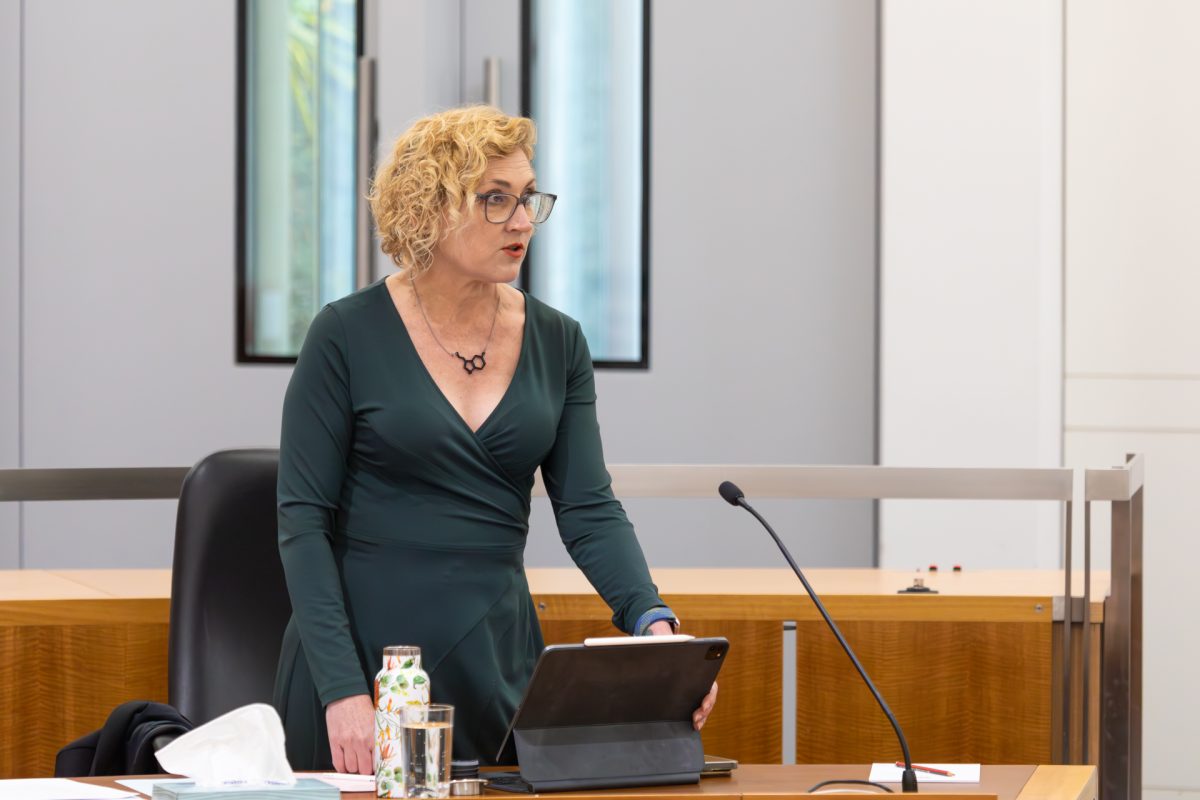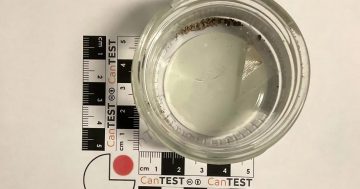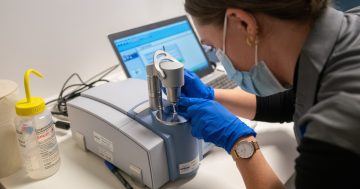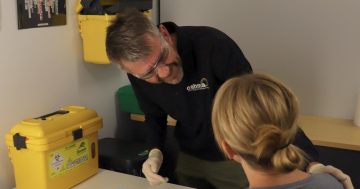
CAHMA executive director Chris Gough is encouraged by developments on the long-promised safe injecting room. Photo: Mitch Lamb, CAHMA.
ACT Greens MLA and Minister for Population Health Emma Davidson says a supervised injecting room could be opened in Canberra in the next term of government after announcing it would be considered as part of a new review into drug harm reduction in the ACT.
Supervised injecting rooms are places where drug users can inject illicit substances under the watchful eye of health professionals.
The ACT Legislative Assembly first passed a law in 1999 outlining a plan for the trial of a facility in Civic, but opposition and constant delays meant this never eventuated.
Since then, medically supervised injecting facilities have been set up in Kings Cross in Sydney (in 2001) and Richmond in Melbourne (2018).
“The best time to put this in place was 30 years ago; the second best time is now,” Ms Davidson said.
A 2021 review by The Burnett Institute concluded a safe injecting room is feasible in the ACT.
“This [new upcoming] review is not to tell whether a safe injecting room is feasible. We know that it is already. It’s to tell us how to do it right,” Ms Davidson said.
She said the ACT Health Directorate review will be commissioned this month (July), will be conducted by an expert in the field and is expected to be handed to the newly elected Legislative Assembly in December 2024.
The announcement was welcomed by Chris Gough, executive director of the Canberra Alliance for Harm Minimisation & Advocacy (CAHMA)
“CAHMA has been pushing for this for a long time, so it’s good to see there will be a review,” he said.
“We need to be brave and just do it. It’s not that hard. I’m frustrated that it’s taken so long. The safe injecting model we had in the 1990s was the leader in Australia. But here we are three decades later, still spinning our wheels.”

Emma Davidson MLA wants this issue to progress quickly. Photo: Michelle Kroll.
Mr Gough said this review was needed as the safe injecting rooms in Sydney and Melbourne are different from what’s needed in Canberra.
“In Richmond, you have public injecting that is visual and street-based, and the public can see the harm.
“In the ACT, we don’t have that, but what the recent 2021 feasibility review study showed is, although it isn’t as visible, we have the same level of harm happening in our community and therefore the same need.”
Mr Gough said there was a potential for Canberra to have the best model for Australia.
“In Sydney, they open the doors in the morning and they get up to 200 people coming through and injecting. That’s all they have time for –injecting and keeping people alive.
“In the ACT, we would have far fewer people coming through the door because of our population size. We’d have more ability to properly connect them with wrap-around care.
“We are advocating for a nurse and peer-led model, which is integrated into the existing health system, where nurses would connect people with doctors and other health services and peer support workers would help people engage and navigate those health and social services and provide ongoing support.
Ms Davidson said the review would consider the best location for a centre and whether it would be co-located with other services, such as the established pill testing facility on Moore Street in Civic.
Mr Gough said there were advantages and disadvantages of doing so.
“On the one hand, you can share resources and expertise, but on the other hand, young people who are using ecstasy on a weekend may not want to go through the front door of a safe injecting room,” he said.
He added that a “not in my backyard” attitude by Canberra residents and businesses has also delayed the establishment of safe injecting rooms.



















